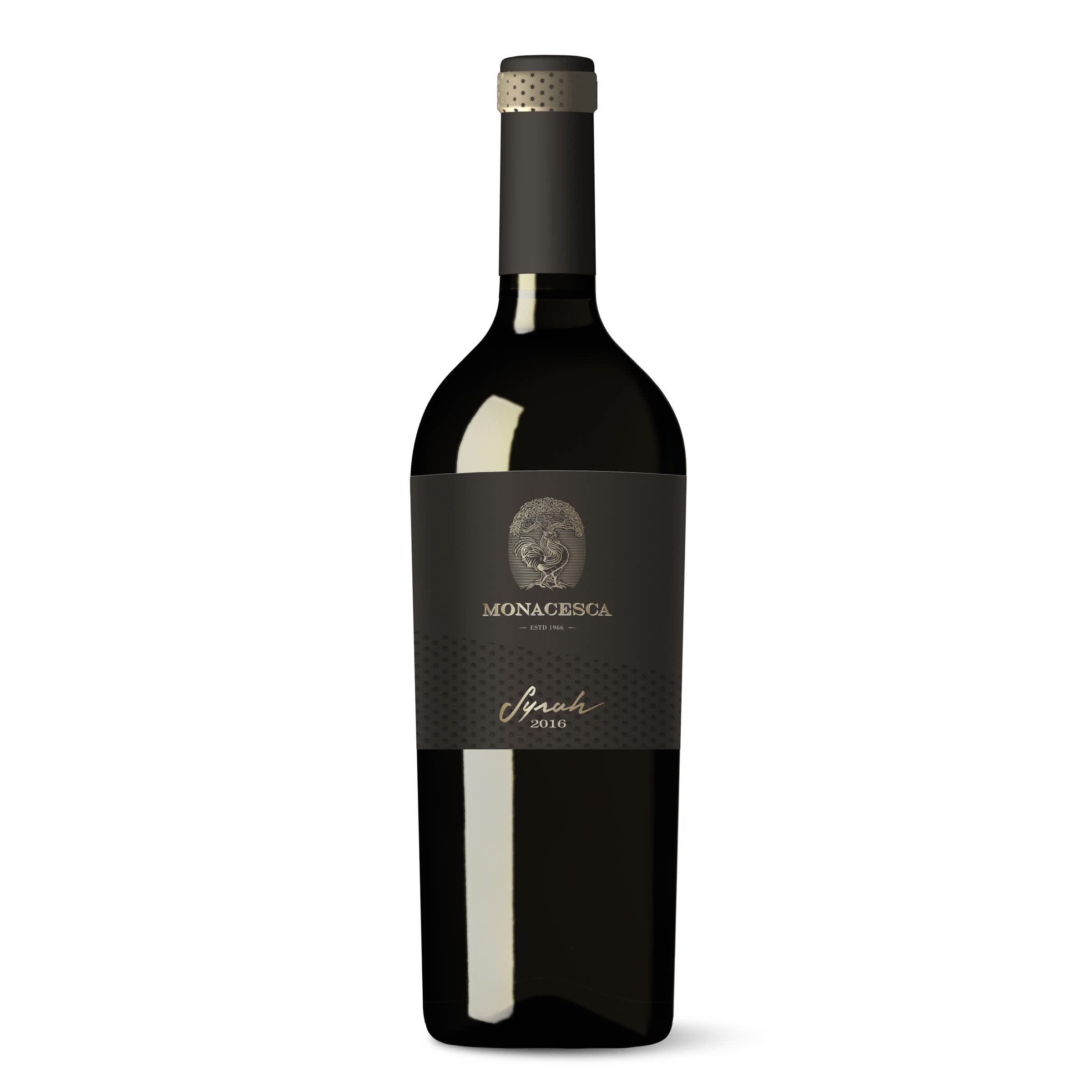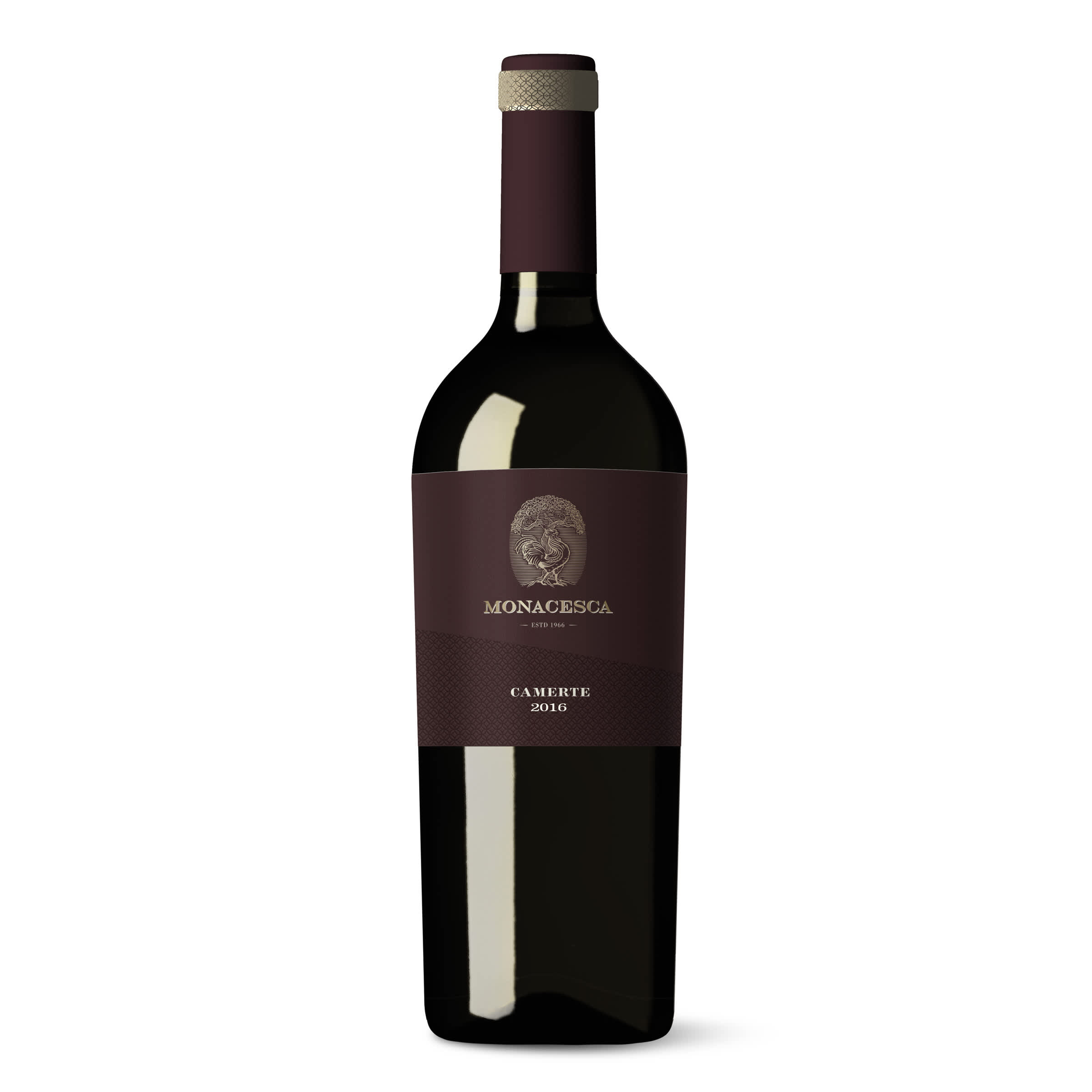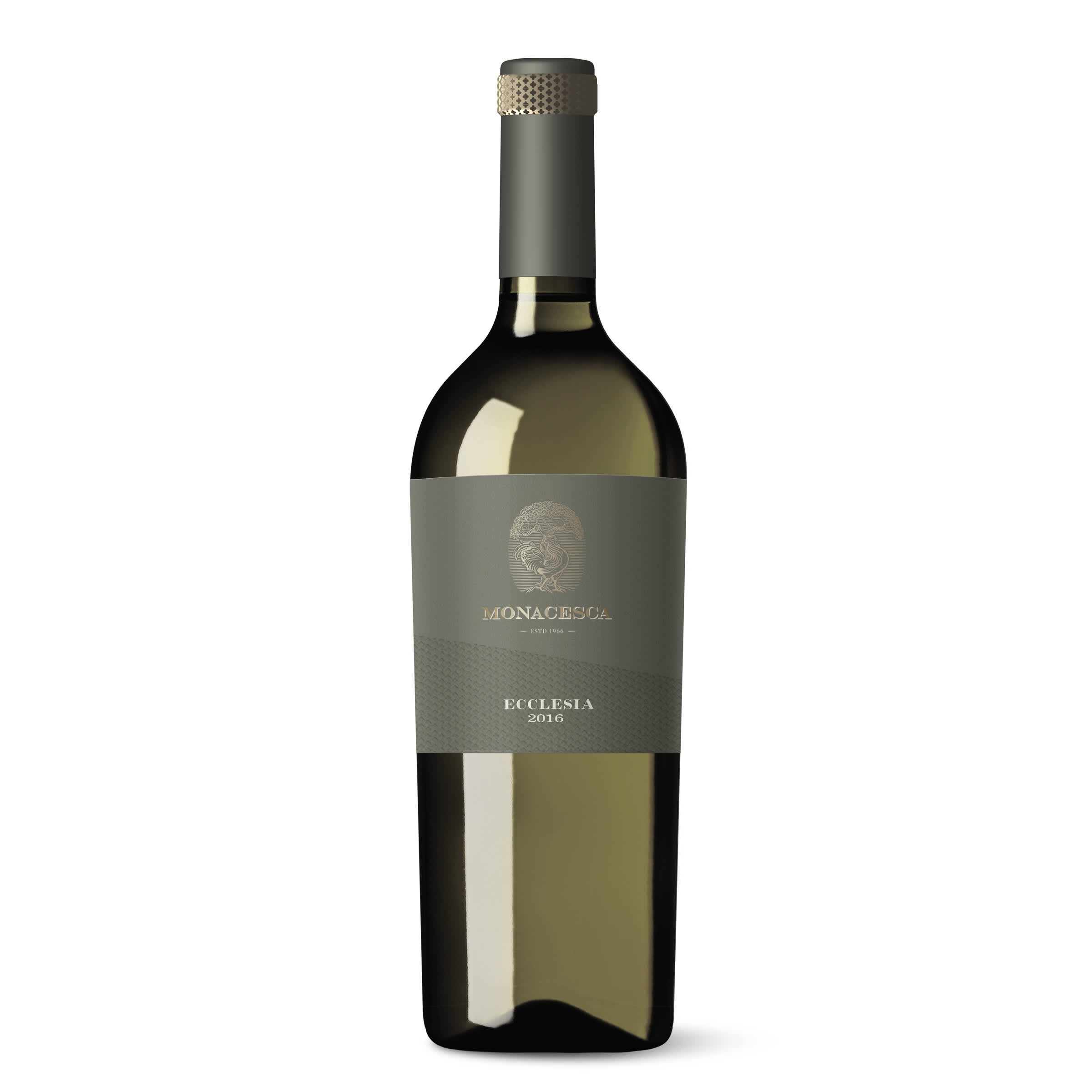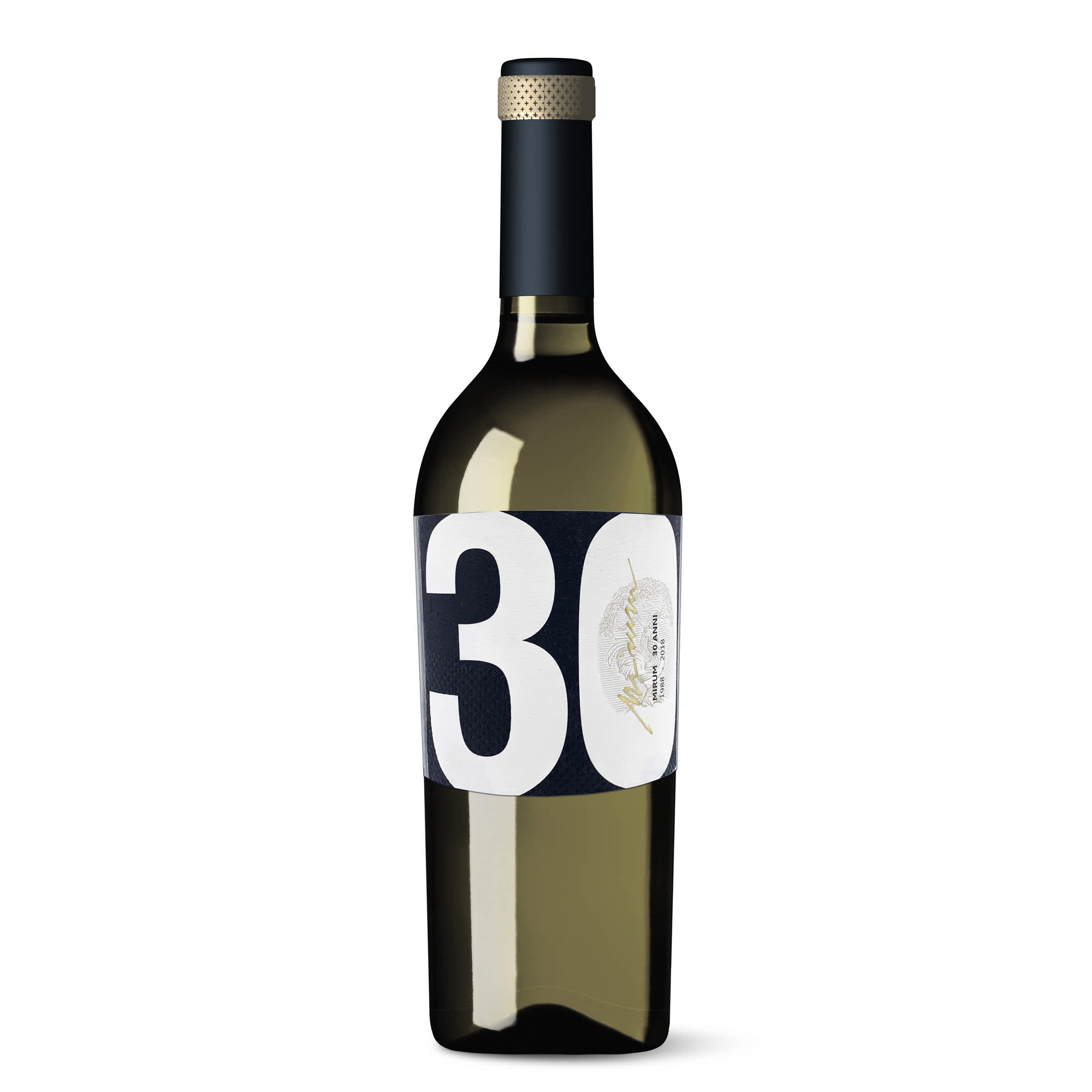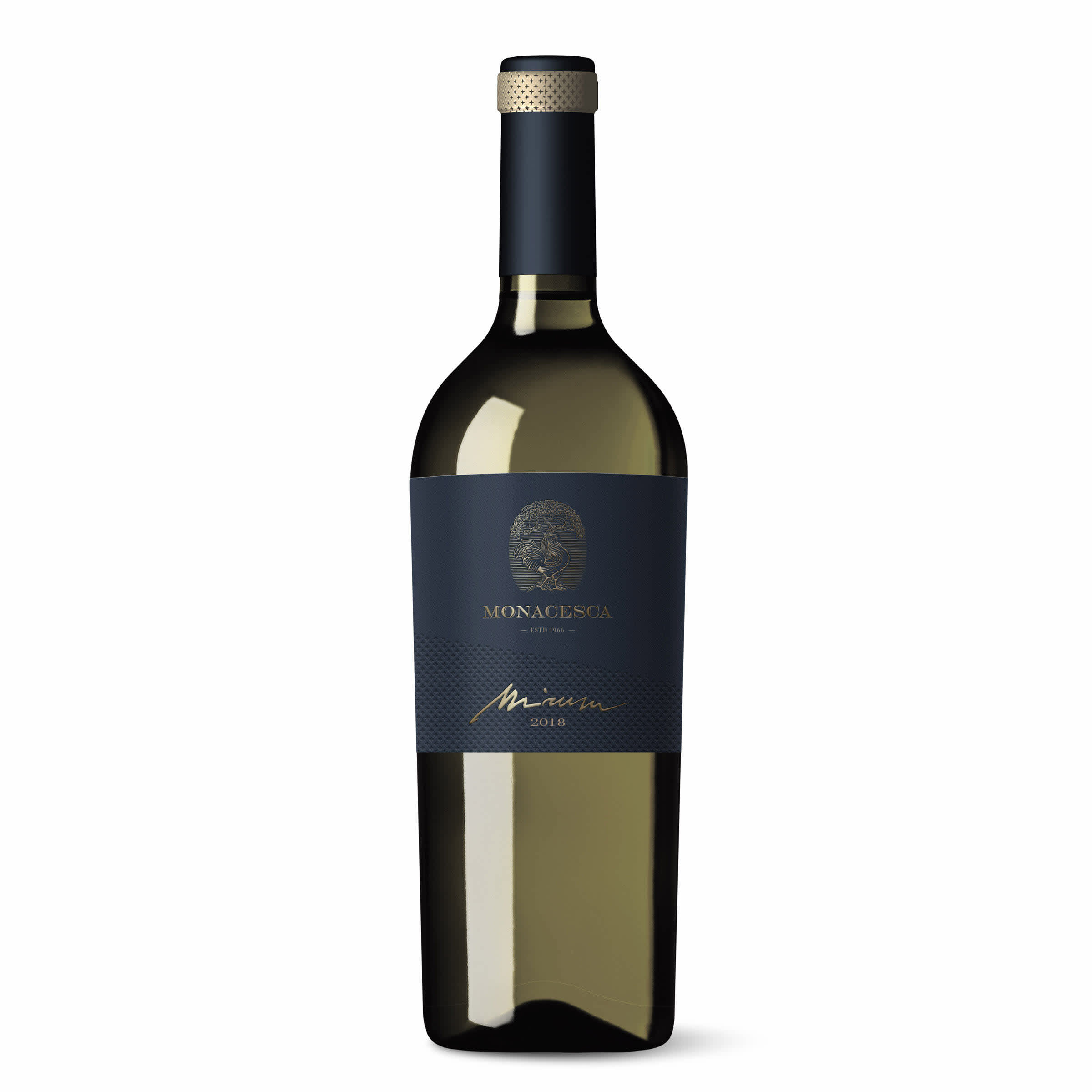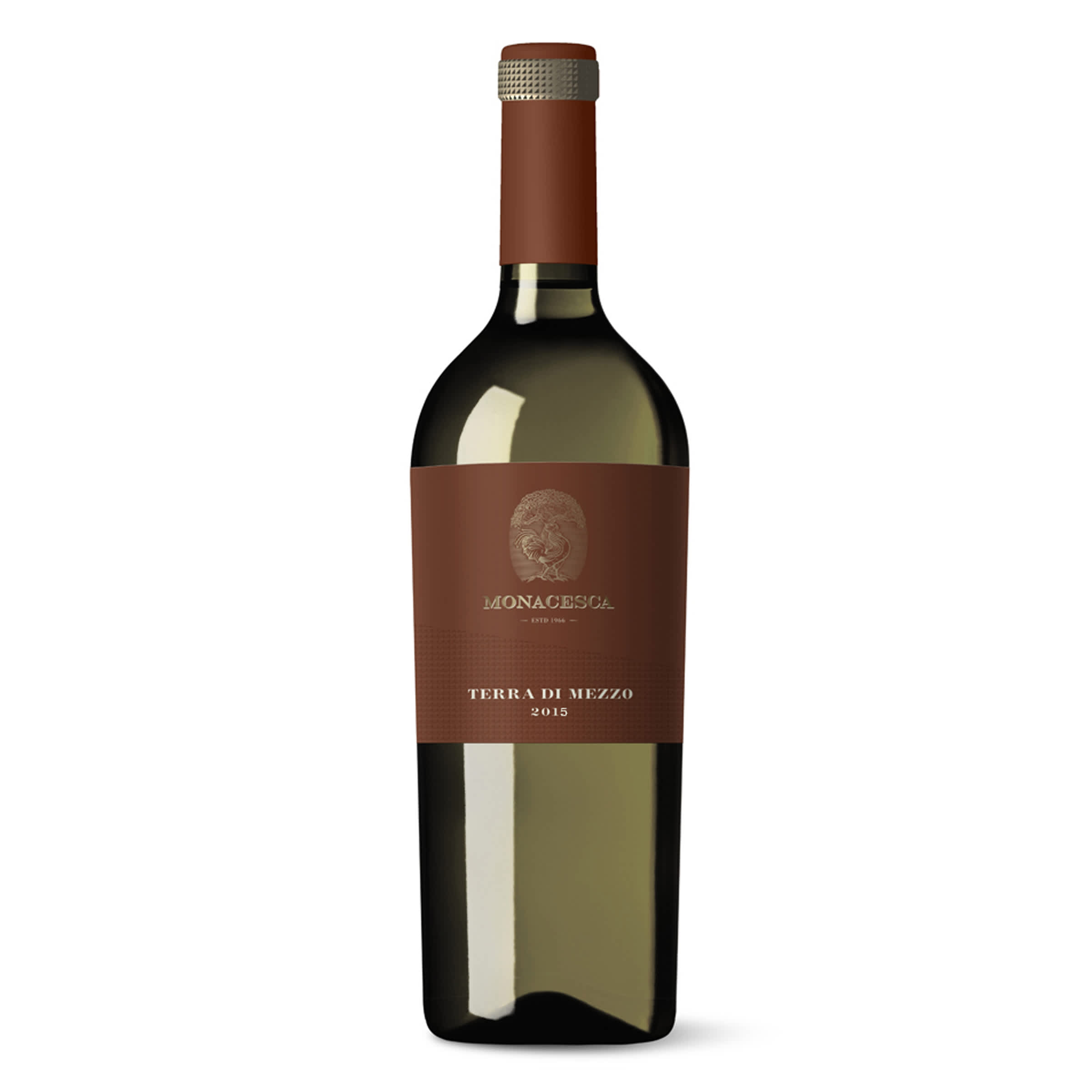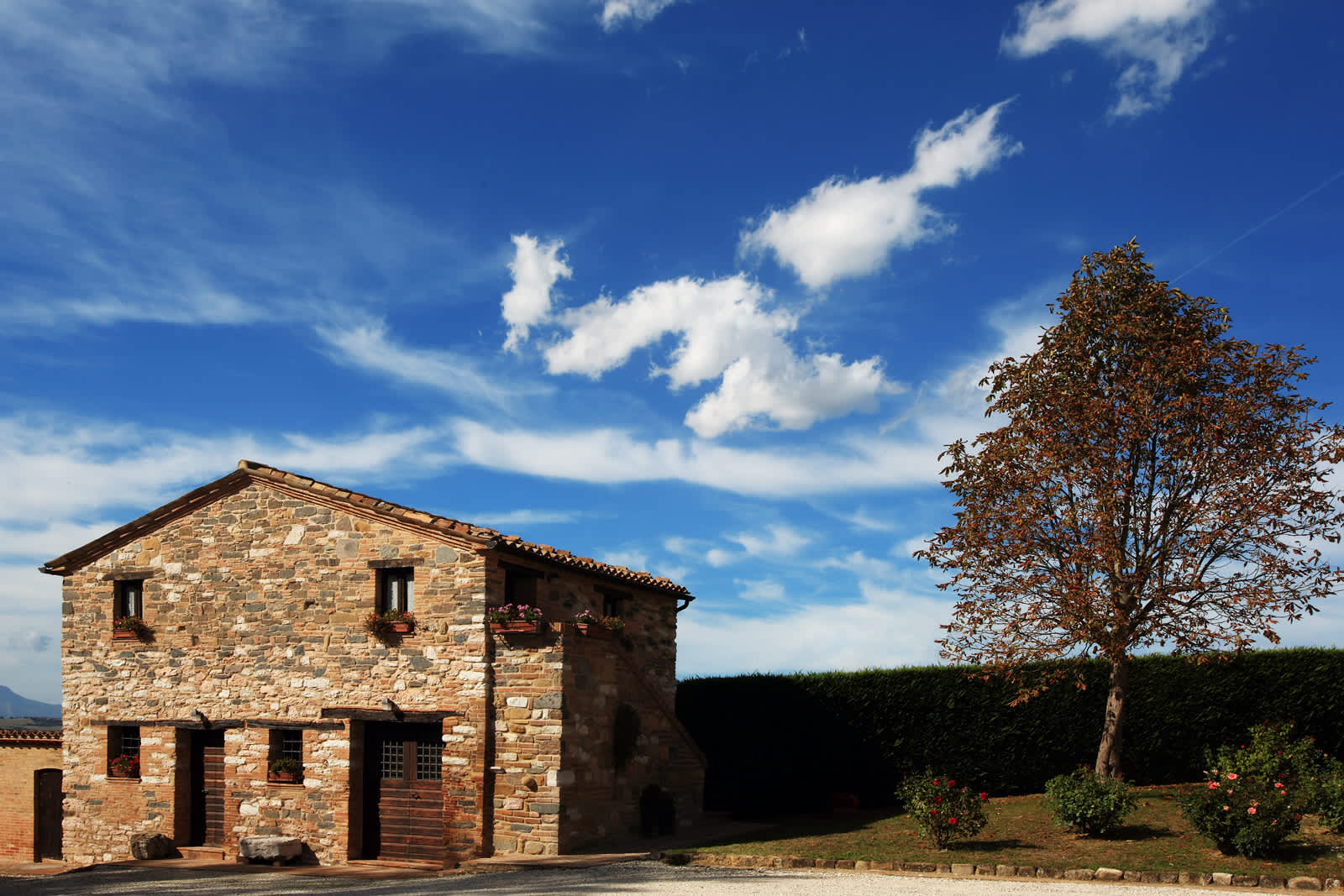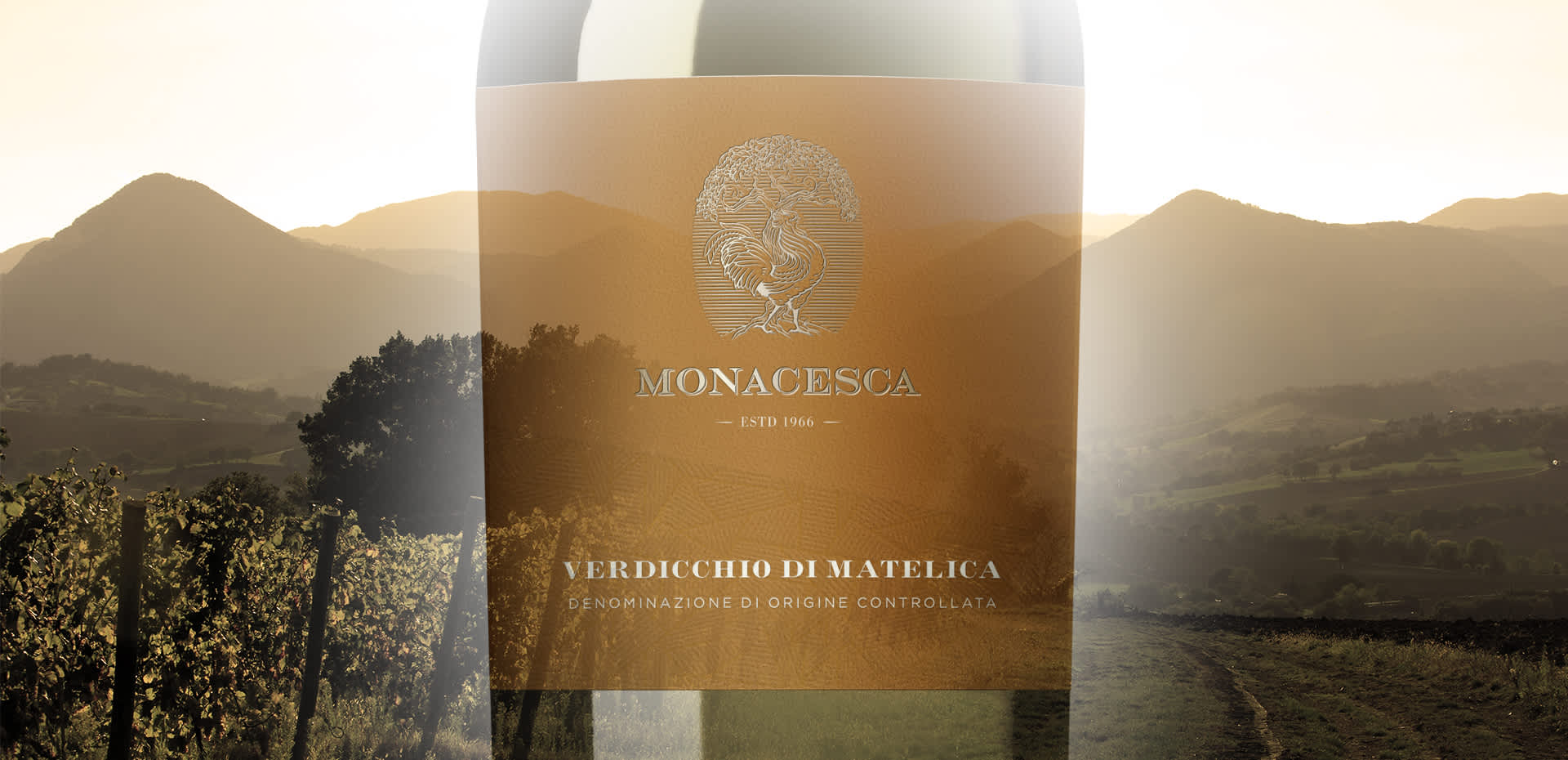WINERY Agricola La Monacesca is located in the commune of Matelica, about 4 kilometres from the centre of town, in the Monacesca contrada, along the state highway that leads to Fabriano. The legal and administration office and production facility, with storage and bottling, is in the commune of Potenza Picena, also in the province of Macerata.. The area where we are located owes its name to the settlement, around 900AD, to a small band of Benedictine monks from the monastery of Farfa who fled northern Italy under the scourge of the Lombards. They decided to stay in this out-of-the-way place, and built a small church and a monastery (today perfectly restored and now part of the winery’s borgo, or hamlet); thus this splendid area took the name of Monacesca over time. The name became the winery brand-name too in 1966, when Casimiro Cifola, having purchased the farm properties, began planting the first vineyards and built the first wine cellar. 1973 saw the release of our first Verdicchio di Matelica. This signalled the departure point for an extraordinary adventure. Starting in 1982, Casimiro was joined by his son Aldo, the current director of the winery; he gave his support to efforts to further increase, through technical means, efforts focused on drawing out the qualities inherent in our fantastic noble grape. Over the course of the years, other contiguous vineyard parcels were acquired, that built up the estate to its current size, and new vineyards were planted to verdicchio and to international varieties (chardonnay). In 1994, the decision was made to plant in Contrada Valle a new vineyard of red grapes, sangiovese grosso and merlot, to restore this area’s great reputation for noble red wines; the area had produced in fact, in the early 20th century, a “Rosso Matelica” that took prizes in international wine competitions. Our current production hovers around 160,000 bottles per year, which go exclusively to the restaurant trade and to specialised wine shops in Italy and abroad. They are still made with the same obsessive care and attention that our loyal customers have saluted us for over the last 35 years and more. Two generations then have continuously striven to convey, through their wines, the magic and the uniqueness of our Camertina valley, so filled with history, with flavours, and with fragrances of bygone eras. This commitment, this extreme passion have never allowed us to forget that the character of the growing area is a great value that must be allowed to shine through, but only if it is inspired to bring out the values of pleasureableness and good balance, which will always signal the difference between a good terroir reflective wine and a truly great wine. All of our efforts in the vineyard, our labours in the cellar, are and will always be carried out to ensure that co-mingled in every glass of wine we offer you will be a taste and a fragrance utterly distinctive and unrepeatable, since our land itself is utterly distinctive and unrepeatable, together with a profound harmony and elegance that all can appreciate and enjoy. TERROIR Today, indigenous grape varieties and unique local terroirs represent absolutely necessary characteristics for the success of a wine, to the point that it is difficult to see how marketing could possibly substitute for nature, in those instances when such qualities are hampered in their expression. We enjoy the good fortune of not having to confront this problem, since our wine production rests on the secure foundation of utterly unique local weather and soil conditions, those of the Alta Valle dell’Esino, or the upper valley of the Esino. We are located within the province of Macerata and a small section of the province of Ancona, in an almost-hidden corner of the earth; perhaps this characteristic makes it even more special, together with the fact that the only valley of any considerable size runs north-south, along an axis delimited by the communes of Castelraimondo (Macerata province) in the south and Cerreto D’esi (Ancona province) in the north. All of the other large valleys in the Marche run west-east. Buried in the Apennine mountains, and in particular in the Macerata area’s pre-Apennine Monti Sibillini, they end abruptly at the Adriatic, rising high above the waters, whose breezes in turn temper their climate. Quite different is the situation here in this magnificent “basin” closed off from the sea, which experiences instead a continental-type climate, with significant swings of temperature between night and day, and throughout the year’s seasons, conditions that render grape-growing more arduous from the point of view of labour and quantity, but decidedly impressive from that of quality, since such difficulties are transformed into remarkably-high sensory quality, thus yielding austere, yet complex wines that over time can deliver sensory pleasure that are unrivalled among Italian wines. If, further, we bring into this picture the intriguing nature of its soils, with their fossils and mineral richness, relics of salt water present in the Palaeolithic, which now contribute to our wines their hallmarks of acidity, crispness, and sapidity, utterly inimitable elsewhere, then we find ourselves in the presence of an overall picture of distinctiveness and absolute quality that only mother nature could draw, an artwork that we, with our labours and dedication, strive to frame as worthily as possible. HISTORY From some 200 seeds of vitis vinifera found inside the tomb of a warrior prince of the Piceni people of the 7th century BC, to notarial declarations of 1579, which describe the suitability of the Camertina valley to the cultivation of the verdicchio grape and to the Brungentile (today’s sangiovese). All of the testimonies bear witness to an ancient, millennia-old tradition of winemaking in this magnificent, nonpareil land of the Marche. Further, beginning in the 16th century, in the Archivio Catastale Matelicese, mention was made of these grapes’ need to not be picked too early; and in the opinion of the doctor Francesco Scacchi (De salubri potu dissertatio , Rome, 1622), they could also make a fizzy wine in the bottle, forerunner of our sparkling wines, well before the well-known experiments a French Benedictine monk, Dom Perignon. We must wait, however, some three centuries (1879) to have the first ampelographic description of the verdicchio grape as the finest white wine grape grown in the Marche, which recognised the uniqueness and versatility of this extraordinary grape. It was officially crowned in 1967 with establishment of DOC status, the first in the Marche and 14th in Italy. The grape continued its star trajectory with the granting in 2010 of DOCG status to its Riserva version, thus reaching a milestone unique in the Italian wine world. Such is the fascination of long-ago eras, from the Bronze Age to our own day, connected throughout their vicissitudes by the thin red line of the vine and its wine, that as always tells the story of mankind and its emotions.


